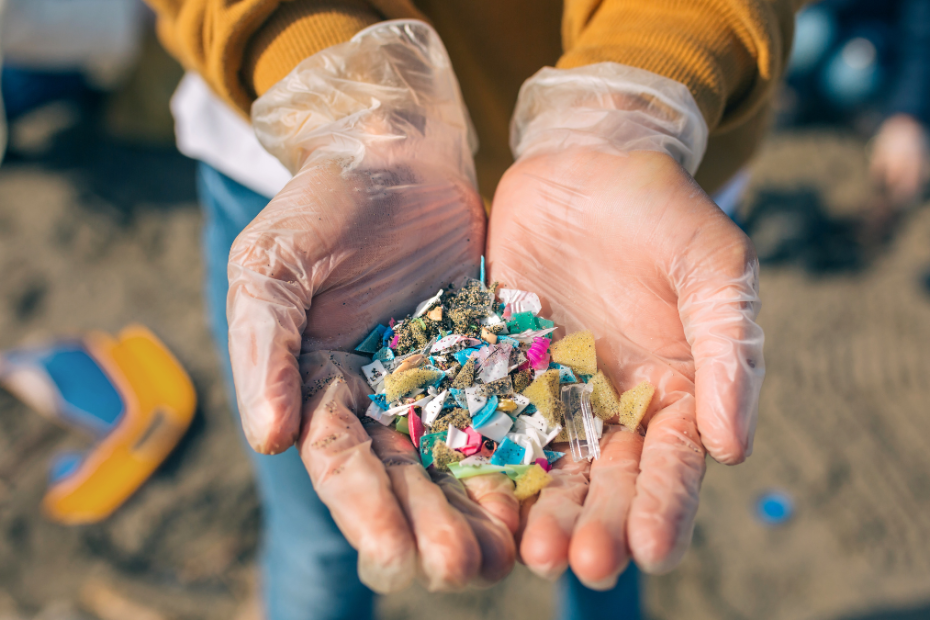Microplastics have emerged as a pressing environmental and public health issue. These tiny particles, typically smaller than 5 millimeters, are fragments of plastic that result from the breakdown of larger plastic debris or are manufactured as microbeads in products like cosmetics and cleaning agents. As the world grapples with the consequences of plastic pollution, microplastics pose an insidious and far-reaching threat, particularly to vulnerable communities. The production of microplastics and the risks these pollutants pose to human health, especially among the poor, presents us, as those who are charged with the responsibility of caring for our common home, with an increasingly clear challenge.
The production and accumulation of microplastics are inextricably tied to human activity and our treatment of the environment. The overuse of plastic materials, improper disposal methods, and a lack of robust recycling systems have all contributed to the growing presence of microplastics in our ecosystems. Single-use plastics, packaging, and synthetic clothing shed microplastics during production, usage, and decomposition. Every year, millions of tonnes of plastic waste are discarded into landfill, rivers, and oceans, where they slowly degrade into smaller particles.
The lack of comprehensive waste management and environmental policies in many regions exacerbates this problem. In developing countries, where infrastructure and regulations may be lacking, plastic waste often ends up in open dumps or water bodies, accelerating its fragmentation into microplastics. The absence of strong environmental protections also leads to industrial practices that pollute rivers and air with these particles. On the other hand, even in highly developed countries, consumerist lifestyles and lax attitudes towards plastic use contribute significantly to the microplastic crisis.
In short, neglecting to care for the environment—whether through unsustainable consumer habits, weak regulatory frameworks, or insufficient recycling efforts—directly fuels the proliferation of microplastics. This underscores the urgent need for global cooperation on environmental protection and plastic waste management to curb the production of these harmful particles.
Microplastics have become ubiquitous in the environment, contaminating oceans, freshwater systems, and even the air we breathe. These tiny particles are now found in the food chain, including seafood, drinking water, and agricultural soils, posing significant risks to human health. While the full extent of the impact is still being studied, there are several alarming concerns.
Microplastics can carry toxic chemicals, including persistent organic pollutants (POPs) like polychlorinated biphenyls (PCBs) and heavy metals, which are harmful to human health. When ingested or inhaled, these particles can cause inflammation, oxidative stress, and cellular damage. Additionally, microplastics may act as carriers for pathogens, increasing the risk of infections.
Ingesting microplastics over time could lead to long-term health issues such as hormonal disruption, reproductive problems, and even cancer. Since microplastics can bypass normal filtration systems in water treatment plants, they have been found in drinking water and table salt, further increasing human exposure.
The poor are often disproportionately affected by the environmental and health risks posed by microplastics. Communities living near landfill, polluted water bodies, and industrial areas are at higher risk of exposure due to their proximity to sources of plastic pollution. In many developing countries, waste management systems are inadequate, leading to the widespread open burning of plastic waste, which releases microplastics and harmful chemicals into the air. This can exacerbate respiratory conditions and other health problems in these communities.
Additionally, people in poverty are more likely to rely on polluted water sources, as they often lack access to clean, treated water. This increases their risk of consuming microplastics, along with the toxins that cling to them. The seafood industry, which is a critical source of protein for many low-income communities, is also severely impacted by microplastic contamination, further increasing their exposure through diet.
In terms of environmental justice, poor communities often lack the political power to push for better waste management or environmental protections, leaving them trapped in cycles of exposure to harmful pollutants like microplastics. They face the double burden of being most vulnerable to the effects of pollution while having the fewest resources to mitigate these risks.
The fight against microplastic pollution is a fight for environmental care and social justice. To address the root causes of microplastic production, the world must prioritize sustainable consumption, reduce plastic usage, and develop stronger recycling infrastructures. Banning single-use plastics, promoting biodegradable alternatives, and encouraging the use of reusable materials can go a long way in curbing the generation of plastic waste.
Investing in waste management systems, particularly in low-income countries, is crucial to reducing the accumulation of microplastics in the environment. Governments and international organizations should support initiatives that improve recycling and reduce plastic pollution in vulnerable communities.
Moreover, individuals play a crucial role in tackling the problem by making conscious choices. Opting for plastic-free products, supporting companies with sustainable practices, and advocating for stronger environmental regulations can all contribute to reducing the environmental footprint of plastic.
Microplastics pose a serious threat to the environment and human health, particularly in impoverished communities. The widespread production and accumulation of these particles result from our collective failure to care for the environment, compounded by weak waste management systems and unsustainable consumption patterns. As the crisis worsens, addressing the microplastics problem requires a concerted effort to protect the environment and safeguard the health of all people, particularly the most vulnerable.
